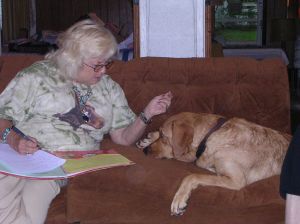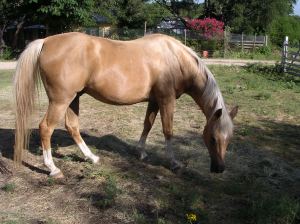 What do the animals tell us in an animal communication session? What is on their mind? Do they have the same issues we humans have? Do they even want to ‘talk’ at all?
What do the animals tell us in an animal communication session? What is on their mind? Do they have the same issues we humans have? Do they even want to ‘talk’ at all?
First of all, yes, 99.9% of our animals do want to talk to us given the chance. Whether their ‘talk’ comes through as words, pictures, or ideas varies, but their eagerness and willingness to share is 9 times out of 10 amazingly strong. In my experience, only when an animal is so traumatized or ill as to be completely shut down or unable to relate will he choose not to participate in a communication.
So when you get an animal ‘on the horn,’ so to speak, what does he or she say?
He says what’s on his mind, just like we do, and often will initiate the conversation with whatever that may be. And usually (though not always) it jives with what is top of the mind for his person.
If you’ve ever had a session with an animal communicator, you have probably at some point in the process said or thought, “I knew that!” Often things the communicator tells you simply confirm what you yourself have felt about your animal. You are closer than anyone to your animal. It is only natural that you should pick up and know more about them than anyone else.
The same goes for the animal. Especially if you have a close bond with him. Animals who live with us as members of our families often read us better than just about anyone. For instance, your dog knows when you are sad before just about anyone else in the household, right? So if you have concerns about your animal, enough to justify having an animal communicator intervene, chances are your animal has already picked up the gist of the topic at hand.
Countless times I’ve had an animal open our conversation with thoughts or comments like:
- Am I in trouble? (a cat who isn’t using the litter box)
- I am so sad because I am disappointing Alice. (a horse who can’t perform a training exercise)
- I’m so excited, something is going on — I can feel it! (a service dog whose household is expecting a new baby)
- I’m very upset because John seems so worried. (an elderly dog with a health condition his owner is worried about)
These are just examples but are typical of what I’m talking about. The animal has picked up the main emotion of whatever issue is preoccupying his person and, whether she understands it fully or not, is reflecting her owner’s concern/joy/excitement over that issue.
The fact that our animals are so incredibly sensitive and receptive to our thoughts, whims, and moods makes it doubly important that we go out of our way to communicate with them — any time, all the time, about everything and anything. In an animal communication session we make sure we get the big issues out on the table first, clarifying the details so the animal won’t worry.
- We help the cat understand why humans prefer he use the litter box and reassure him that we will also make sure he doesn’t have a urinary infection that has caused this momentary behavior blip.
- We ask the horse if there is a reason he can’t perform the exercise, and he shows us that he has a very sore stifle.
- We show the service dog that a new family member is soon due and that everyone is thrilled and excited about it, and that he will be the infant’s guardian.
- We carefully convey to the older dog that we understand he isn’t feeling well, that his person cares deeply and feels concerned about it, and that everything possible will be done for his comfort and well being in the future.
Those are the kinds of things the animals tell us — exactly what is on their mind . . . and ours. So be sensitive. Fill in the blanks for them. If your dog has started acting nervous and anxious, and you are packing up to move in two weeks, make darn sure he knows what’s happening, and reassure him that he will go with you and be taken good care of throughout the entire relocation process!
*********************************************************************
MAYBE THESE ADDITIONAL POSTS WILL HELP.




 The larger question is whether animals CAN be “one-person” individuals. And yes, of course they can. They come in as many different personality types as we do, so why should they be any different?
The larger question is whether animals CAN be “one-person” individuals. And yes, of course they can. They come in as many different personality types as we do, so why should they be any different? If you’re an animal communicator, you’re almost certainly what’s known as an empath. An empath is someone who can pick up empathically the feelings of another. It’s kind of like vicariously experiencing the thoughts or feelings of someone else without having been given any objective information that would have contributed to your experience. Clear as mud, huh. But if you’re empathic, you know what I’m talking about.
If you’re an animal communicator, you’re almost certainly what’s known as an empath. An empath is someone who can pick up empathically the feelings of another. It’s kind of like vicariously experiencing the thoughts or feelings of someone else without having been given any objective information that would have contributed to your experience. Clear as mud, huh. But if you’re empathic, you know what I’m talking about.
